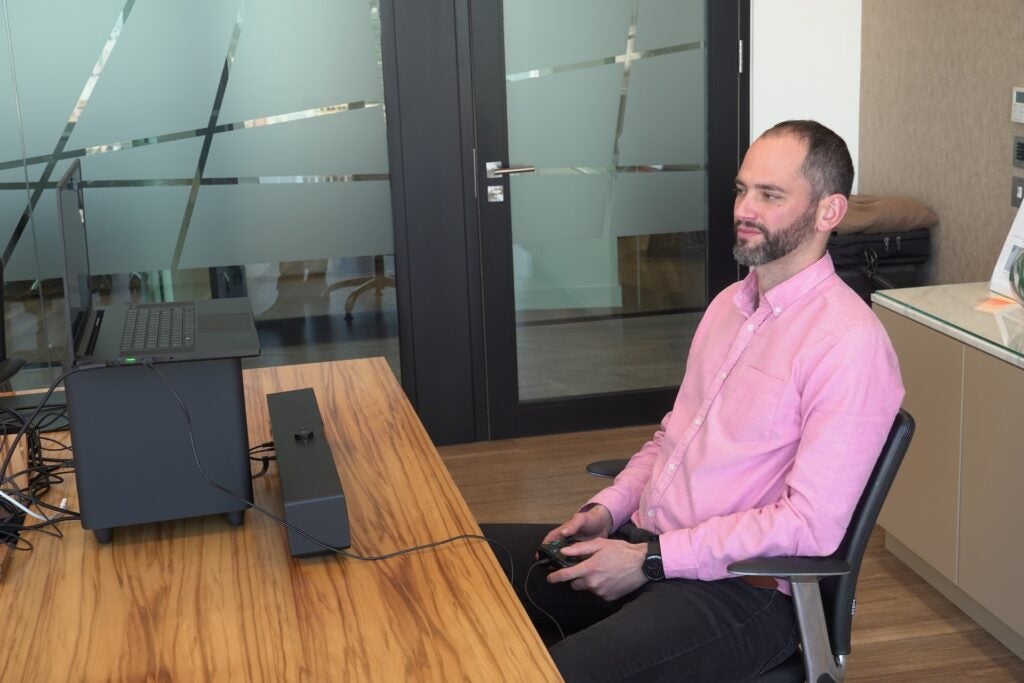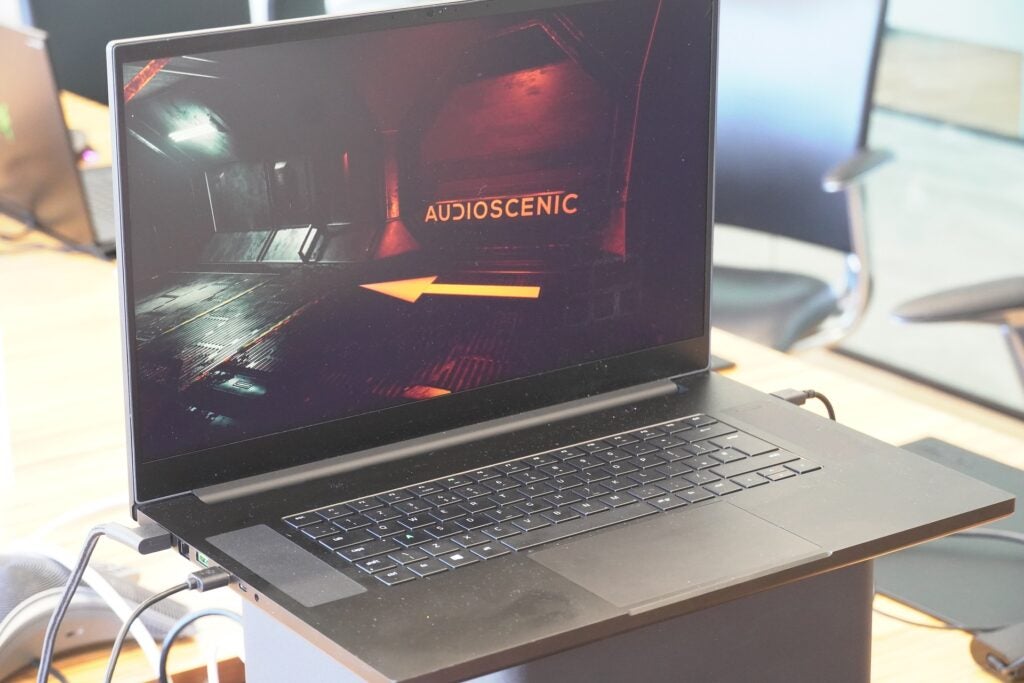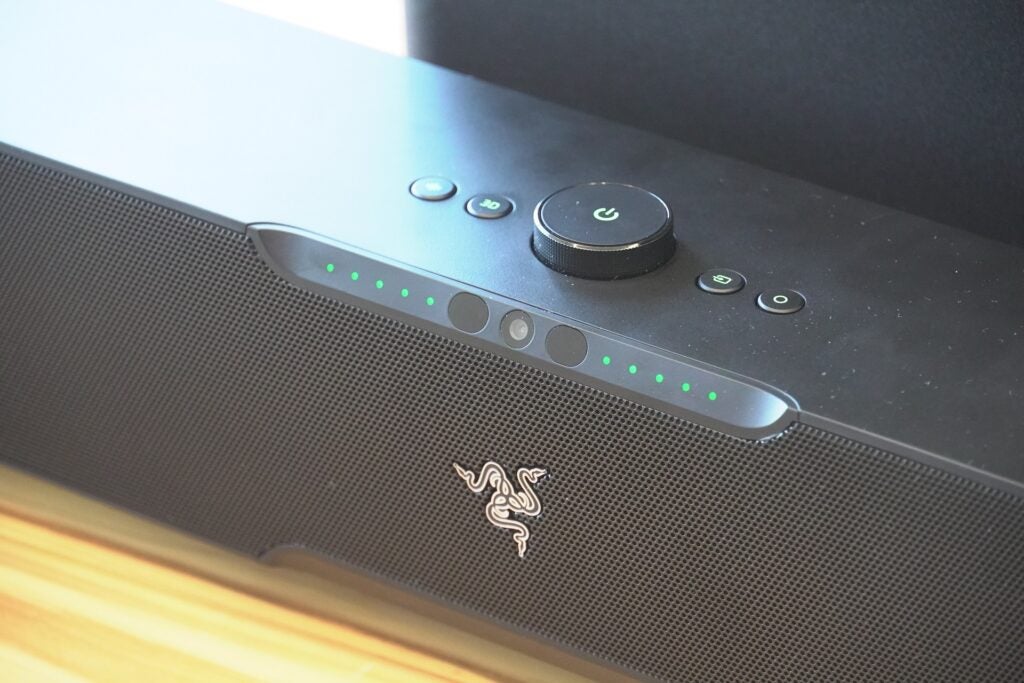OPINION: There’s so much hype in the audio and tech industry that when I hear about something that could revolutionise this or change that, I tend to downplay it. Most of the time, the stuff that truly transcends is way above the budgets that most can afford.
During a demo session held in The Shard however, I heard a soundbar that could live up to its hype. The only other soundbar where I’ve felt a similar ‘wow’ factor was from the Sennheiser Ambeo Max, which is a £2000 colossus.
This particular soundbar cost £400 and goes by the name of the Razer Leviathan V2 Pro. It’s got some secret sauce in the form of spatial audio processing from Audioscenic that left me very, very intrigued.
The Razer Leviathan V2 Pro was first shown at CES 2023, and you can read our first impressions of it here. It’s been available to buy for a few months now – and having now heard it myself I can’t believe that no-one is raving about its spatial audio.
This speaker uses AI-powered beamforming technology to create the sense of virtual (or phantom) speakers around you. Speaking to Dr Marcos Simón, CTO of Audioscenic, the inception of this idea was the notion that not everyone has the room for a surround sound system in their home. Not everyone can afford a big house, flats are more common and on top of that, people rent. Who wants to be hauling big, massive boxes every time they move?

So Audioscenic has created this virtualised spatial sound effect, one that uses a camera embedded within the soundbar to track your head/eyes. From there it can work out where your ears are and create a soundfield to trick your brain into believing that these sounds are right next to your head or off to the side. It’s very clever and it works impressively well. You must hear it and once you do, you’ll become a convert.
Playing through a Doom-esque demo game that Audioscenic created to show off the technology, the first time I heard a knock I thought someone was knocking on the door to the room I was sat in – I could hear it right at my ear level even though the soundbar was below me and the laptop screen was in front. It achieves a sense of spatial audio that’s possibly more impressive than a pair of headphones because there is a real sense of depth, width and space, rather than the audio source being glued to your head.

Granted, with a dedicated pair of headphones like Sony’s Inzone headset, a similar effect is achievable – one that’s even more intense because you’re sealed in with the earcups. At the beginning of April, I tried the Resident Evil 4 remake with Sony’s Inzone headphones in 3D audio and I was terrified in the scene with the Garrador – the sense of immersion was fantastic.
So while there’s not that same sense of being locked in like there is with a pair of headphones (and perhaps ignoring your surroundings), the Audioscenic demonstration was more expansive – almost like a magic trick was being performed. Tonally it sounded good and there’s punch to the sounds as well, and while the proximity of these sounds lacks the scale of a Dolby Atmos surround system it perhaps works as effectively because it’s close by. All it needs is a camera to scan the space in front, which opens it up to being used with all types of devices.
There are limitations, of course. Move about and the camera will stop tracking you and the 3D effect becomes less effective. This also means that the sweet spot isn’t particularly large, though Audioscenic is working on expanding it to being able to track two people. There’s also the question of how close you need to be for the camera to track you, if you’re using the soundbar with other devices than a laptop.

Another aspect I hadn’t thought of is battery life with portable devices. Headphones with head-tracking like the Yamaha YH-L700A suffer from big battery drain when 3D aduio is used, and the same might apply to Audioscenic’s technology.
Nevertheless, this feels like the best execution of a new idea in a long time, avoiding the need for multiple speakers or a pair of headphones. What’s always bothered me about Dolby Atmos audio in TVs is that it doesn’t necessarily result in 3D audio, simlpy that the TV is capable of better processing with compatible audio tracks. With Audioscenic’s tracking technology, it fully realises that 3D concept with amazing prowess. Believe the hype, it’s justified with this one.




